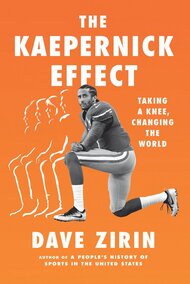The New Era of Backlash in Sports and Politics

On August 3, 2020, members of the Connecticut Sun team kneel during the playing of the national anthem before a WNBA basketball game in Bradenton, Fla., in solidarity with the labor strikes protesting the shooting of Jacob Blake in Kenosha, Wis. (Phelan M. Ebenhack, File / AP Photo)
Trump opened up the world of sports to the hard right.
Douglas Hartmann, a professor at the University of Minnesota who studies protest movements among athletes, believes that the Black Lives Matter movement that followed the 2020 police murder of George Floyd launched a new era in sports and politics, and I’m inclined to agree. The years of 2012 to 2020 saw players trying to organize a protest-oriented, progressive political intervention inside the sports world. Examples of this abound, from the Miami Heat posing in their hoodies after the murder of Trayvon Martin to the kneeling of Colin Kaepernick, to the retirement of Maya Moore, to the WNBA players helping to swing the US Senate. I could go on and on, and not just with star athletes but also with legions of young people who took a knee, raised a fist, and became emboldened because their agency as athletes mattered in the fight against police violence.
During most of this period, the right-wing bosses and politicians were caught flatfooted. For them, sports had certainly always been a place for politics: their own politics. Militarism and hyper-patriotism held sway comfortably for over a century and was then amped up dramatically after 9/11.
These are the politics of “national unity,” and every time the national anthem was followed by “God Bless America” and a salute to the troops, they were in their comfort zone. The players took this political landscape and turned it on its head, and this was too much for Donald Trump. Speaking in Huntsville, Ala., in 2017, Trump called kneeling NFL players “sons of bitches.” NFL players were enraged, and more athletes kneeled in response and refused to visit the White House while Trump was president.
But Trump accomplished something important with that speech: He opened up the world of sports to the hard right. Conservatives started to attack and mobilize against the ways in which the sports world had been pushing for collective change. Media companies sprouted up with analysis that boiled down to bashing any politics deemed “woke.” Upset about a kid killed by police? For many right-wing pundits, lawless slayings became less of a concern than that players acted “woke” in response. The right wing is proudly using athletics as a Trojan horse for its their own hatreds and fascism—either that or you think Ben Shapiro has a passion for sports coverage.
That wasn’t the only difference. Right-wing athletes started champing at the bit to express their own ideas, dispensing with the notion that sports was the place for national unity. Sports would now be a contested space, and battle would be joined. As Hartmann points out, we cannot merely genuflect when an athlete speaks. They have so much influence; these statements demand analysis and to be taken seriously.
We have also seen that the platform of sports is not just for the Megan Rapinoes of the world but also for NBA also-ran Enes Kanter to go on Tucker Carlson’s show and blast Black players for speaking out. It’s been used by many prominent women athletes, including, heartbreakingly Martina Navratilova, to condemn trans people who compete and share locker rooms with cisgender women. Kyrie Irving became a cause célèbre among white nationalists for promoting an unwatchable anti-Semitic film, which rocketed to the top of Amazon’s charts. And please don’t get me started on either golf or Ron DeSantis’s texting buddy Tom Brady.
These people and many others realize that sports is an inherently political space. But Trump, through his bombastic rhetoric, did something even worse than inspire right-wing athletes and media to let their flag fly. He inspired governors—the ones supposedly from the party of small government—to use the power of the state to enforce their own sense of morality on sports. Currently, 18 states have K-12 laws preventing transgender students from playing on teams consistent with their gender identity. Title IX is also under threat by a right that sees gender equity as a nefarious plot. States are allowing schools to overrule a Supreme Court 1943 case and punish students who kneel during the anthem. Most of these attacks on student protest and trans kids came in the aftermath of the mass protests following the police murder of George Floyd. These right-wingers looked at the multiracial masses in the streets and saw that they were losing a generation. Instead of reckoning with people’s anger, they unleashed a backlash across all aspects of society. That’s the period we are in right now in the world of sports: backlash and reaction, with small-government Republicans using the power of the state—just like with the library book bans—to retake a world they thought was their own.
This gets to one part of Hartmann’s ideas with which I disagree. Hartmann believes that the level of right/left polarization in sports is so intense that it could reach a tipping point where the battle will be halted not by players but fans demanding a return to sports as pure entertainment and escapism. He says that it may take a decade, but at the fans behest sports could possibly revert back to the safe middle. In other words, the center could reassert itself and hold.
I disagree. I don’t see a path for “the center” to assert much of anything. As a society, we are too polarized. The fears about climate, police accountability, and the crumbling of our infrastructure are too intense. Sports will be a contested space for as long as the chasm exists in this country between those fighting for progress and those simmering in reaction. Sports won’t be immune from this. It will reflect it, and perhaps even shape it. Kaepernick’s protests were six and a half years ago, and now another generation will have to stand on the platform he helped build. The platform is now much stronger thanks to the athletes of 2012–20. Young athletes have the pressure of living up to their courageous predecessors while also coming into the league amid a vicious backlash.
Players are now the ones on their heels, but I don’t believe that will remain true. If I’m wrong, then the center, in my view, won’t be the alternative. It will be instead a carnival of reaction, with the political backs of athletes broken. This cannot happen. Instead of the expectation of peace, we need to gird ourselves for the battles to come.
More columns ⇒
Support the Work
Please consider making a donation to keep this site going.
Featured Videos
Dave on Democracy Now!

